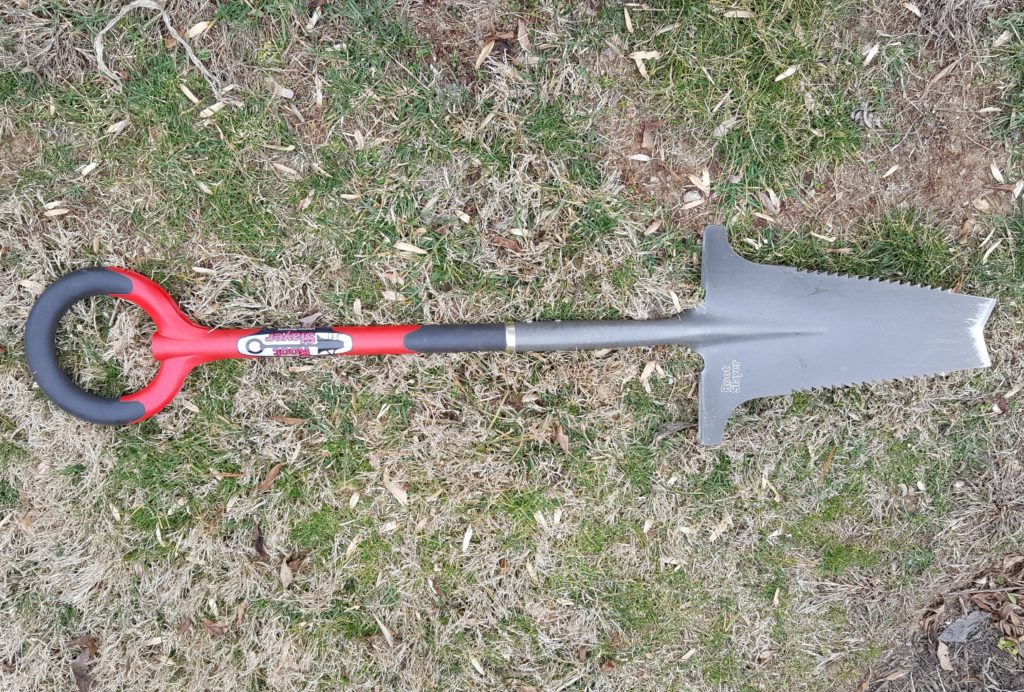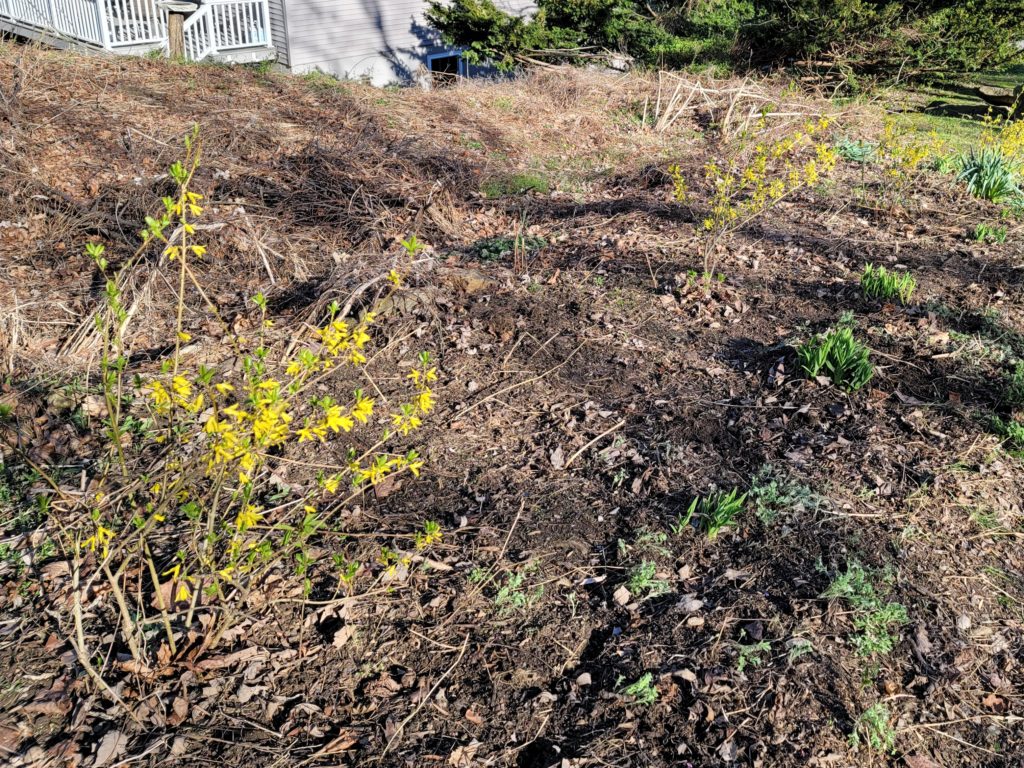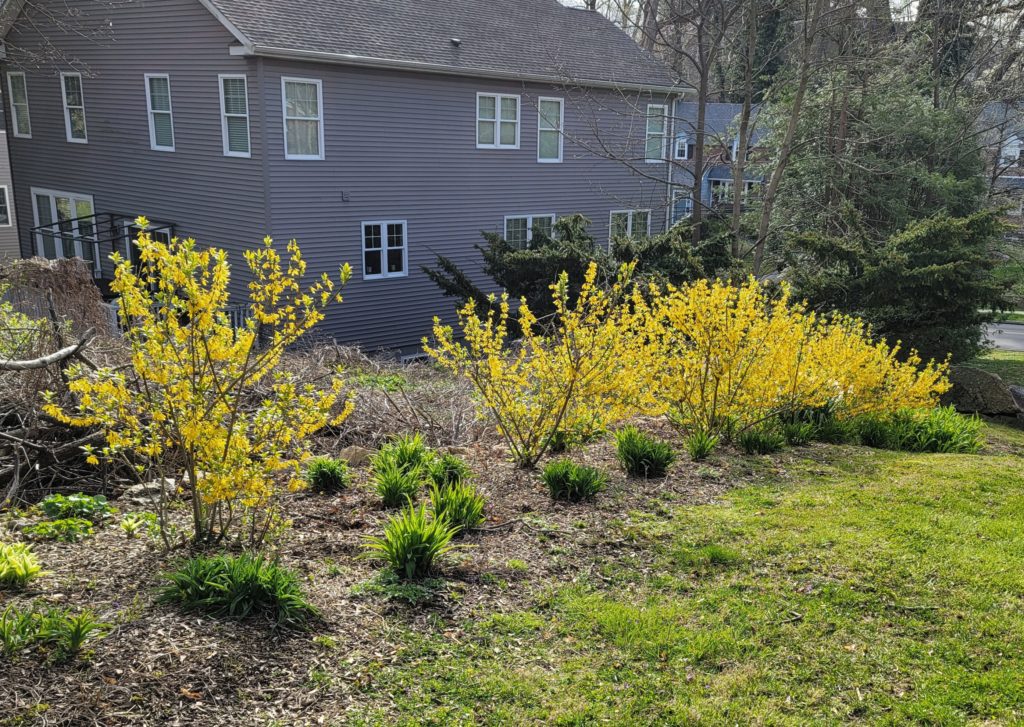Introduction
Transplanting the root suckers is an easy way to multiply the number of shrubs in your garden. Many shrubs, such as forsythia and lilacs, will produce root suckers. Root suckers are the vertical growth from the root system of a mother shrub. These suckers may be a nuisance, but you can dig them out and transplant them in another location. This post will show you how to do it.

The picture above shows many root suckers (with green stems) of a Forsythia shrub. The best time to dig out these root suckers is early spring when the plants are still dormant. Since they do not have leaves yet, there will be less stress for the new transplants. Just one word of caution, some shrubs are grafted plants. So the suckers are not the true offsprings of the desired shrub.

Tools and procedure
The best tool for the job is a root cutting shovel (also known as root slayer shovel or root assassin shovel), as shown in the picture above. It has a narrow blade with a sharp inverted V-notch tip and two serrated side edges. Therefore, it can easily cut the roots when you insert it into the soil about 5 inches around the root sucker. After cutting around the sucker for a full circle, you can lift it up easily with a garden fork, and transplant it at a new location. If it did not rain recently, you may water the shrubs thoroughly one day before you do the transplanting. This will make the digging easier and ensure a relatively intact root ball.

Picture above shows four suckers of forsythia just dug up. They are ready for planting in a new location.
Transplanting the root suckers

After transplanting, water the new plants at regular intervals in the first year to help them grow until they establish. Picture above shows the forsythias suckers one year after transplanting in a new location, they are blooming in late March. They are really care-free, and just need annual pruning to keep in shape. They are deer resistant and tolerant to black walnut toxin.

This picture shows that the transplants are growing very well on the second year without much caring.

This picture shows the forsythia transplants after four years. They were pruned to encourage branching for fuller appearance.

